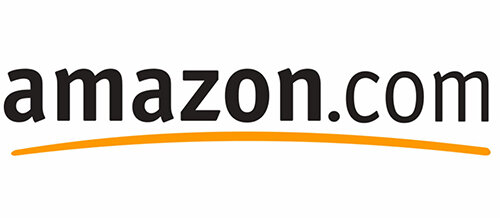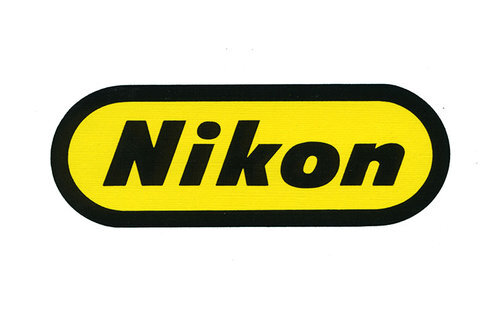Everything There is to Know About Choosing Your Brand Colors
One of the biggest things my clients struggle with is choosing colors for their brand. Everyday someone asks me “HOW DO I KNOW WHAT COLORS TO CHOOSE? THERE ARE SO MANY, AND SO MANY SHADES OF THEM ALL!” Trust me- I get it, and I’ve been there. It took me being in business for three months alone before I really nailed down and solidified my own personal brand colors.
Picking your brand colors can be simple and stress-free if you follow these few steps!
STEP ONE: UNDERSTANDING WHAT EACH COLOR MEANS + COLOR PSYCHOLOGY.
It may seem far-fetched, but our emotions towards a brand are often directly tied to color in our subconscious. Knowing what your ideal client will connect with is essential in picking your brand colors-- because you want to make sure that the colors you choose truly make them FEEL. It’s important to establish what you want your brand to represent and what colors you can choose to make sure that it is represented well.
For example- do you want your brand to be feminine, colorful and bold? Then you would choose a color palette that is very different from someone who wants their brand to be modern, tech-y, and sleek.
Red- a very intense and emotional color. It’s bold and typically is used to grab attention (stop signs, red lights, fire extinguishers). It’s a color associated with fire, blood, energy, war, danger, power, love, passion, and desire.
(McDonalds logo, Chick fil-A, Toyota, Coca-Cola, Heinz, American Red Cross, Canon, Netflix, Target)
Pink- pink is a color we are taught from birth (think: pink or blue for a baby shower) denotes feminine qualities. Pink represents femininity, love, romance, harmony, sweetness, tenderness. In color psychology, pink is the color of hope (think: Breast Cancer Awareness).
(Barbie, T-Mobile, Vineyard Vines, Victoria's Secret, Baskin Robbins, Lyft)
Orange - The color orange is playful and friendly. It has a certain refreshing quality that is energetic and inviting! Orange is also a color that is often associated with youth and appetites. It’s also very warm, so it can be used to invoke emotions.
(Fanta, Nickelodeon, Orange Theory Fitness, Amazon, Home depot, soundcloud, shutterfly)
Yellow - Yellow is similar to that of orange in the way that it is playful, energetic and enthusiastic. When we think of yellow, we think of sunshine and happiness. It invokes feelings of optimism and is very attention-grabbing. (Hence, why most traffic signs are yellow!) This color can be perceived as youthful, too. So that’s why you’re more likely to see it on a children’s brand rather than high-end, adult brands. (With the exception of Ferrari)
(Nikon, Post-it, National Geographic, Best Buy, Snapchat, Forever 21)
Green - Green invokes feeling of connection and nature. It’s a color that feels very natural, organic, fresh and healing. Another view of the color green is… MONEY! Of course, when we are talking money brands, it usually gives us feelings of wealth and stability. Green is a color that is very safe and calming.
(Whole foods, Starbucks, Spotify, Animal Planet, John Deere, H&R Block)
Blue - The color blue gives off vibes of professionalism and trust. It’s also a color that is very mature and secure. Just like the color pink, we are all taught that blue is a masculine color. It’s also often affiliated with things associated with cleanliness and purity.
(Ford, Dell, American Express, Visa, Chase, Paypal, Boeing, Blue Cross Blue Shield, Facebook)
Purple - The color purple is often associated with feelings of luxury and royalty. It’s a color that can be elegant, creative and sophisticated. Oftentimes the color purple can invoke feelings of mystery. Fun fact: Purple used to be the most expensive color to reproduce, which is why it is often looked to as an elitist.
(Hallmark, Roku, Yahoo, Lifetime, Wonka, Crown Royal)
Black - Black is edgy and powerful. It’s essentially the absence of light so it can often be perceived as mysterious and secrecy. However, it’s also very modern and minimalistic. It’s a color that evokes elegance and class.
(Adidas, under armour, nike, Vans, Clavin Klein, Coach, Chanel)
STEP TWO: SEE WHAT YOU ARE NATURALLY ATTRACTED TO.
At this point, you should have a vision board for your brand. Whether it be pictures on a Pinterest board or clippings from a magazine, creating a visual for how you view your brand is super important for choosing your brand colors. If you haven’t done that yet, check out my post on creating a vision board here!
After you have your vision board created, take a long hard look at it and ask yourself, “what colors have I naturally been attracted to?” You should have an obvious color palette going on in the brand inspiration you’ve curated. If you have a vision board that is a little crazy and not a whole lot of cohesiveness when it comes to colors, have no fear. Take 1-3 of your favorite photos/pieces and we’ll start with that.
Choose 6 colors from your board that seem to be the most prevalent. Don’t worry about making this perfect yet... You’re one step closer.
VOCABULARY LESSON
Let’s take a short break and go over some quick vocabulary words, shall we? There are a few different color palette types that you can have, so in order to decide which one you are going to do, we will need to learn exactly what they mean.
Complementary - a complementary color scheme is one that consists of opposite colors from the color wheel (like red and green, blue and orange, etc.).
Monochromatic - a monochromatic color scheme consists of different shades and depths of a single hue. These are super pretty, but can easily become “boring” if not done right. (different shades of purple starting from darkest purple to the lightest purple)
Analogous - an analogous color scheme is a main color and the colors from either side of it on the color wheel. They are colors that are all in the same color family. (pink, orange, red)
ANNNND, WE’RE BACK WITH STEP 3: EVALUATE YOUR COLOR SCHEME.
Take a look at those 6 colors that you picked out. Are they complementary, analogous or monochromatic? Which one will work the best with your brand?
Let’s do some adjustments.
For colors schemes that are complementary, you probably have a bright palette going on. Try making it a bit more cohesive by making them all warm colors or all cool colors.
If your color scheme is analogous, try adding a color or two from the opposite side of the color wheel to add some contrast.
Lastly, if your colors are monochromatic, try adding colors that are opposite of your main color to make it a little more vibrant!
STEP 4: ESTABLISHING COLOR AUTHORITY.
The next and final step to picking your brand colors is to establish color authority. By this, we mean establishing what are your two main colors, aka your dominant colors, and your secondary colors, aka accent colors.
You’ll choose 2 out of your 6 colors to be your dominant colors. These colors are usually the most bold and the ones that will be used the most often. (i.e. for your logo, logo variations, etc.)
Your accent colors will be the ones that act as just that, accents. Using the same two colors in every piece of branding material is unrealistic, so having these accent colors make for some great options when creating all of the artwork and elements that go into your brand.
Remember, your brand is unique to you and your creative vision - so let the creativity flow! Treat this post as a guide, not a strict instruction manual. The biggest mistake you can make with your brand colors is making them not true to yourself. Your emotional connection to your brand is the most important part!
Need help picking out your brand colors? Contact me and I can help.




































